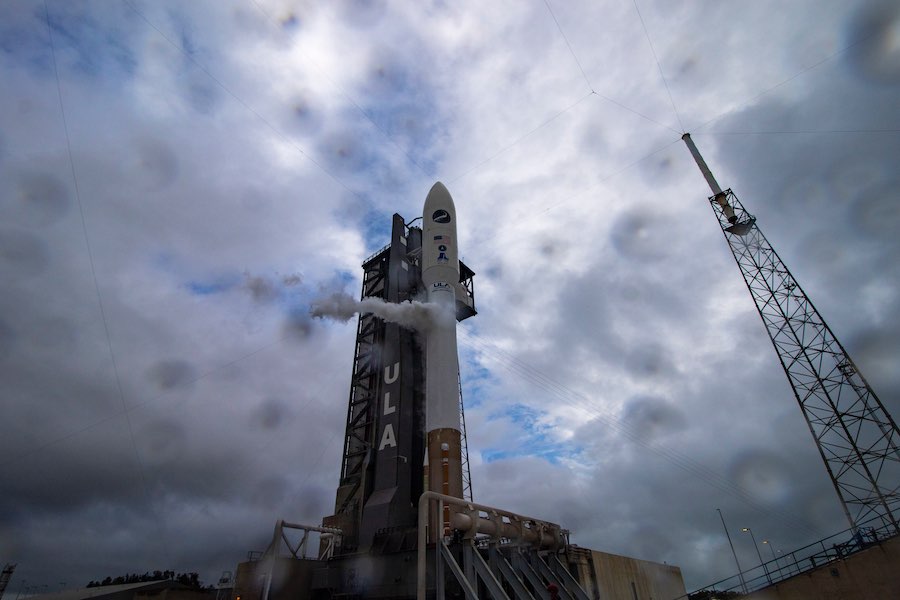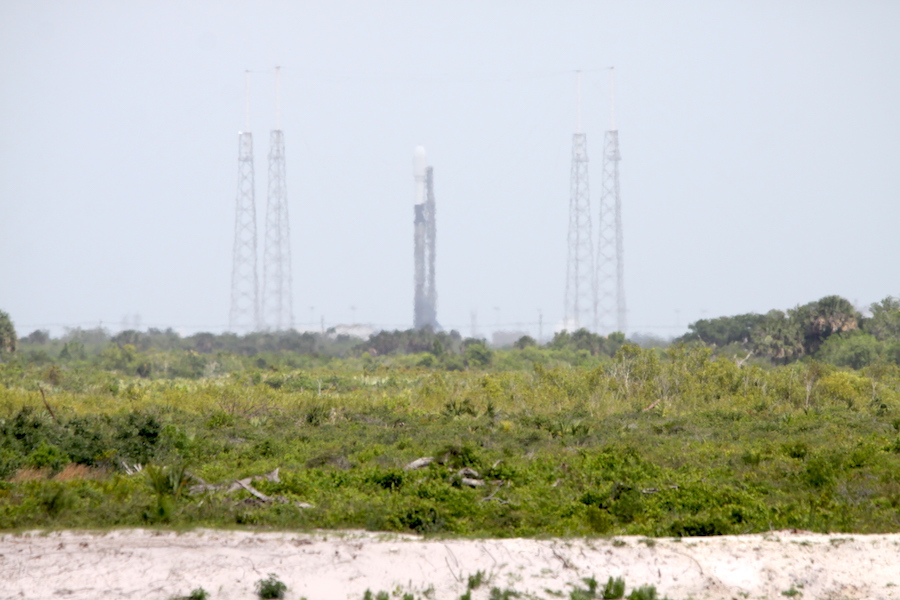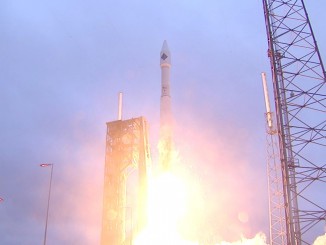EDITOR’S NOTE: Updated at 12:40 p.m. and 9:00 EDT with quote and additional SpaceX launch delay.

Gusty winds associated with a subtropical low pressure system prevented United Launch Alliance from sending an Atlas 5 rocket into orbit Saturday from Cape Canaveral with the U.S. Air Force’s clandestine X-37B spaceplane. ULA plans to try again Sunday, and a SpaceX Falcon 9 rocket launch from a nearby pad has been delayed to Tuesday.
ULA had reserved Sunday as a backup launch date for the Atlas 5 rocket weeks ago, before SpaceX requested the same day on the U.S. Space Force’s Eastern Range after delaying its launch from earlier in May. The range provides safety and other support functions for rocket launches from Cape Canaveral and the Kennedy Space Center.
The range typically operates on a first-come, first-served basis, so SpaceX’s Falcon 9 mission could only launch Sunday if the Atlas 5 rocket lifted off from Cape Canaveral’s Complex 41 launch pad Saturday.
SpaceX initially announced after the Atlas 5 scrub that its launch would be pushed back from Sunday to Monday. Later Saturday, the company said the Falcon 9 flight with the next set of Starlink Internet satellites would not occur before 3:10 a.m. EDT (0710 GMT) Tuesday.
The additional slip in the Falcon 9’s launch to Tuesday was caused by weather conditions spawned by a developing tropical depression off Florida’s East Coast, SpaceX said. A rocket recovery vessel was deployed into the Atlantic Ocean around 400 miles (630 kilometers) northeast of Cape Canaveral for landing of the Falcon 9’s first stage booster.
The floating platform began moving closer to the North Carolina coast Saturday as forecasts showed the tropical system strengthening and moving toward the rocket’s landing zone.
“SpaceX teams will continue monitoring launch and landing weather conditions,” the company tweeted Saturday night.
The Atlas 5 and Falcon 9 rockets will launch from neighboring pads located about a mile-and-a-half apart at Cape Canaveral Air Force Station.
After high winds and cumulus clouds prevented launch of the 197-foot-tall (60-meter) Atlas 5 rocket at 8:24 a.m. EDT (1224 GMT), ULA targeted Saturday’s back-up 10-minute launch window. The launch team proceeded with the terminal countdown for a potential liftoff of the Atlas 5 at 10:23 a.m. EDT (1423 GMT) in hopes weather conditions might improve.
In the end, the weather remained unfavorable and ground winds tripped the Atlas 5’s launch limit.
“The ground winds exceeded the limit of what we could safely fly through,” said Julie Arnold, a ULA spokesperson.
Officials called off the countdown at T-minus 1 minute, 40 seconds.
ULA’s launch director confirmed the Atlas 5 team would try again to send the launcher into space at 9:14 a.m. EDT (1314 GMT) Sunday, when there is a 70 percent chance of favorable weather.
The payload awaiting launch inside the Atlas 5’s nose cone is the U.S. Air Force’s reusable X-37B spaceplane, which takes off on top of a rocket and returns to Earth for landing on a runway. The military has two of the Boeing-built vehicles in its inventory to perform experiments and deploy small satellites in orbit.
The X-37B is about one-quarter the length of NASA’s retired space shuttle orbiters, but it can operate in orbit for years on each flight, significantly longer than the shuttle’s mission lifetime of a couple of weeks. This mission marks the sixth orbital flight of the X-37B program.
Military officials have disclosed several experiments on the upcoming flight, including two NASA investigations to study the effects of spaceflight on seeds and other materials. A Naval Research Laboratory experiment will demonstrate technology that could generate solar power in space, then beam the energy down to Earth for terrestrial use.
And a dishwasher-sized satellite from the U.S. Air Force Academy named FalconSAT-8 will deploy from the X-37B in orbit to perform propulsion experiments.
The spacecraft is also believed by analysts to host other classified experiments.

The Falcon 9 rocket scheduled to take off from Cape Canaveral’s Complex 40 launch pad is loaded with SpaceX’s next batch of around 60 Starlink satellites.
If the Atlas 5 and Falcon 9 had remained scheduled to launch on consecutive days, the two flights Sunday and Monday would have occurred 18 hours, 18 minutes apart.
That would have marked the shortest turnaround between two orbital launches from Cape Canaveral since September 1967 when Delta-G and Atlas-Centaur rockets took off within a 10-hour span from separate launch pads, according to a launch log maintained by Jonathan McDowell, an astronomer at the Harvard-Smithsonian Center for Astrophysics who tracks global satellite and launch activity.
Last August, a Falcon 9 and an Atlas 5 rocket launched from Cape Canaveral in a period of less than 35 hours. That was the shortest span between two orbital missions at Cape Canaveral since May 1981.
In recent years, range teams at Cape Canaveral are working to reduce the time required between launches. In the last few decades, the range team needed up to 48 hours to reconfigure infrastructure between launches.
That was primarily driven by readying tracking radars, transmitters and other equipment to monitor the trajectory of rockets as they arced downrange, and to send a destruct command if the launcher flew off course.
The range now tracks rockets using the GPS satellite navigation network, and the Falcon 9 launches with an autonomous flight safety system, an on-board computer that would automatically terminate the flight in the event of a major problem.
Brig. Gen. Doug Schiess, commander of the 45th Space Wing that operates Cape Canaveral Air Force Station, said the range team for an Atlas 5 launch, which uses a ground-commanded flight termination system, numbers around 300 people, including range operations, security forces, the fire department and other support teams. That number is around 200 people for a typical commercial Falcon 9 launch, which uses an autonomous flight safety system.
“The fact that one is a flight termination system (with a human in the loop), and one is an autonomous flight safety system is what really gets us to the ability to do (two launches) within 24 hours,” Schiess said.
Schiess said earlier this week that the range recently assessed the possibility of launching two SpaceX missions within six hours from different launch pads. That appears feasible with two rockets that use autonomous flight safety systems, Schiess said.
Unless the Atlas 5 launch is delayed to Monday, range officials will have to wait for a future opportunity to demonstrate the rapid launch turnaround capability.
Email the author.
Follow Stephen Clark on Twitter: @StephenClark1.



